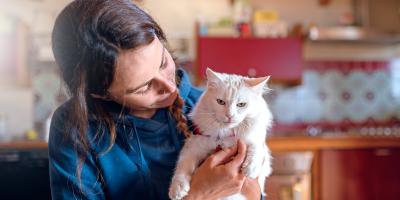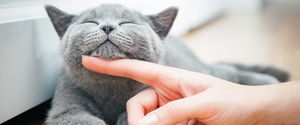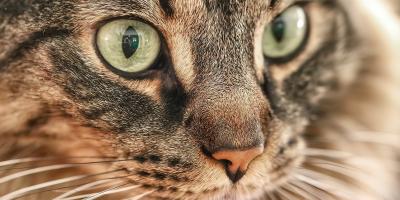
Cats can be a little standoffish when it comes to physical affection, but that doesn't mean that petting your cat isn't a part of your bond. There are plenty of cats that are cuddly or that at least enjoy an occasional pat or scratch. Whether your feline friend is very social or tends to keep to herself, here are some tips on how to pet a cat.
Why Petting Your Cat Is Important
It's long been shown that petting an animal can help relieve stress and anxiety in humans, but that doesn't mean you're the only one getting any benefits. Petting your cat in a way that's enjoyable for him — more on that below — is a way to interact socially with your feline friend and help develop your bond. Petting your cat also helps you detect if there are any issues happening under their hair that you can't see, such as fleas, ticks, scratches, bumps or areas that are swollen or painful. It can be very difficult to tell when a cat is sick or in pain, and being aware of these first signs can help ensure you get your cat to the vet early on.
How to Pet a Cat
1. Read Your Cat's Body Language
Any time you're touching an animal, it's important to be respectful of their space and whether they even want to be petted. Cats in particular can be very sensitive to touch and will let you know if they're OK with a cuddle or stroking via body language. Purring is almost always a good sign, but turning away, trying to escape, scratching or hissing are signs that it's time to stop. A happy cat will be relaxed and may even rub the sides of their mouth across your hand or nudge underneath your hand when you stop petting to encourage you to continue.
2. Learn Where Your Cat Likes to Be Petted
In general, cats prefer to be stroked along their back or scratched under the chin or around the ears. Paws, tails, their underbellies and their whiskers (which are super sensitive) are best avoided. However, every cat is different, and it may take some experimenting to find out how and where your cat likes to be petted.
3. Know When to Stop
Even the most affectionate of cats can get touched out, so it's important to pay attention to your pet's body language while you're doing the petting. If your cat was purring and relaxed but starts to try to sit up or change positions or make any other movements that indicate they're done, respecting that and letting them move on helps reinforce that petting is a good thing and keeps your cat from avoiding human contact later on.
Do Cats Like Being Petted?
While there's no one-size-fits-all answer to this question, it's also true that most cats enjoy being petted to some degree. Learning how to pet your cat in a way that's comfortable and enjoyable can be a great way to bond with your pet, strengthen your relationship and provide some stress-boosting benefits for you as well.
Related articles



